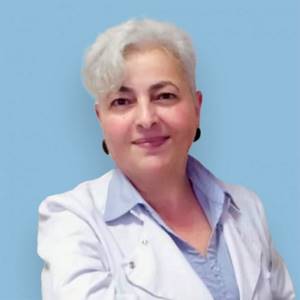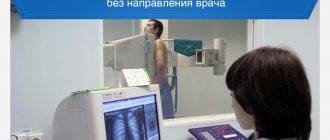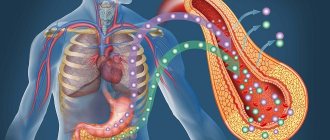The thymus (thymus gland) is an important organ of the immune system of children. It is located in the upper chest and consists of two lobes that meet at the front of the trachea. The gland grows until puberty, reaching a mass of 30–40 grams, then gradually decreases (reverse development).
It plays a dominant role in the immune and endocrine system. The thymus produces thymosin and thymopoietin, which stimulate the production of antibodies, and also produces T-lymphocytes - white blood cells that destroy abnormal cells with foreign antigens. Another function of the thymus gland is to prevent abnormal cell growth and prevent cancer. It should be noted that the thymus plays a leading role in the immunity of a child under three years of age.
The role of the thymus in the life of a child
Before birth and during childhood, the thymus is responsible for the production and maturation of T-lymphocytes, which protect the body from certain threats, including viruses and bacteria. The thymus is the largest lymphoid organ in newborns, as it produces lymphocytes more actively than other tissues. The gland acts as the “first violin” in the development and improvement of the child’s immune system.
The thymus produces and secretes thymosin, a hormone necessary for the production of T cells. After “ripening” in the gland, they enter the blood and migrate to the lymph nodes and spleen, where they help the immune system fight the disease.
In some cases, the function of the thymus gland is reduced, which weakens the immune system, increasing susceptibility to infections and allergies. The child suffers from prolonged acute respiratory viral infections, the pathology easily becomes chronic. A lack of T-lymphocytes in the body can lead to immunodeficiency diseases, characterized by severe sweating, swelling and/or sore throat, swollen lymph nodes, and depression.
Malnutrition and protein deficiency at an early age cause slow or limited growth of the thymus gland, thereby “undermining” the normal functioning of lymphocytes. This is why a balanced diet with enough protein is important.
Doctors in this field
Characteristic
Mothers often complain that their children are constantly sick and therefore do not attend kindergarten much. And they have to be on sick leave all the time, which entails many difficulties with work, as well as financial instability.
In this case, you should immediately check the baby’s thymus gland, because it is responsible for his immunity. The thymus gland or thymus gland is very small. Its weight in a newborn is only 15 grams. But at the same time, it is precisely this that is so important for the entire endocrine system. The thymus controls the functioning of some other organs and is responsible for the development of the child and his growth.
The thymus is located in the upper part of the chest. It is a soft, lobulated organ, gray-pink in color. This gland will grow with the baby; by the time the child reaches adolescence, it will weigh 37 grams. After which the organ will begin to shrink, and by old age its weight will approach 5 grams.
Thymus pathology
Main types of thymus pathology:
- Aplasia – absence or underdevelopment of the thymus gland
- Hypo- and dysplasia – underdevelopment of the thymus
- Accidental involution – reduction of the thymus gland, under the influence of hormonal imbalance, stress, infection
- Atrophy – reduction, replacement of glandular tissue with connective tissue, cessation of functioning
- Thymomegaly is an increase in the mass and volume of the thymus parenchyma above the age norm while maintaining its normal structure
- Hyperplasia is an increase in glandular tissue, with disruption of the production of immune cells and the functioning of the thymus.
- Thymoma is a tumor of the thymus gland.
- A thymus cyst is a fluid formation of the thymus gland.
- Pathology of the thymus (thymus gland) can cause: the development of a number of immunodeficiency syndromes, autoimmune diseases and some endocrine disorders.
Decoding the results
The study is carried out using transverse scans, thus determining the width of the gland. The remaining dimensions are clarified during a longitudinal study. The doctor who conducted the study or your therapist can decipher the results. It is worth remembering that the normal weight of the thymus gland is 0.3% of the child’s total body weight. If this value is exceeded, the child will be scheduled for consultation with an endocrinologist.
As stated above, previously the thymus was examined using radiography. But it was unsafe for the kids. Ultrasound examination does not cause any harm and at the same time provides more accurate results. The child has to spend some time practically without moving. The procedure also requires a special ultra-sensitive sensor.
When the examination result is controversial or not fully determined, the doctor may refer the baby for additional diagnostics. Ultrasound is excellent as a primary method of studying the condition of the thymus, but it still does not show the whole picture. Together with it, the same safe procedures can be carried out, such as ECG, heart diagnostics, and blood pressure measurement. If there is a large deviation from the norm, a scan of the retroperitoneal space can be performed. Blood and urine tests are required.
+
Thymus enlargement in children
An upward deviation in the size of the thymus and a decrease in its function are referred to as “enlarged thymus gland syndrome” (ETS) in children. The problem of an enlarged thymus is often considered in the light of differential diagnosis with pleurisy, pericarditis, mediastinal tumors, and other pathologies.
It is mistakenly believed that an enlarged thymus in infants or young children is a physiological condition. The peculiarities of the course of infectious diseases in young patients with CVS make it necessary to classify the syndrome as a pathology. Children with CVS are more likely to develop an imbalance of the neuroendocrine plus immune systems. Therefore, patients with detected enlargement of the thymus require a full examination and follow-up with an endocrinologist or immunologist.
How is the scan performed?
Despite the fact that ultrasound of the thymus is now a routine examination that is performed on almost every baby in Moscow, this procedure is very difficult to perform. This is because the thymus is small and located behind the sternum bone, making it difficult to visualize. In general, the procedure is indistinguishable from a simple ultrasound. The baby must be undressed to the waist. A special gel-cream is applied to his chest. Next, they begin to move a special sensor along the baby’s chest. Children who are under two years old should lie on the couch for the entire procedure, or parents can take them on their laps to make the baby feel more comfortable. Older children should stand on their own.
Symptoms of disease or developmental disorders of the thymus gland
In order to promptly identify thymus pathology, parents should pay attention to deviations of varying degrees of severity, which may indicate a disease or disorder of the development of the thymus gland:
- Frequent incidence of colds in children.
- Protracted course of various diseases, with frequent complications.
- Enlarged lymphoid tissue - lymph nodes, tonsils, adenoids, tissue on the back of the pharynx.
- Pale and/or marbled pattern on the child’s skin.
- High baby weight at birth.
- The child quickly loses and quickly gains weight.
- Cough outside of a cold, which gets worse when the child is lying horizontally.
- Sweating, low-grade fever for a long time outside of colds.
- Hyperhidrosis, cold extremities.
- Visible venous network on the baby's chest.
- Cyanosis (blue discoloration) of the nasolabial triangle during exercise (crying, running)
- Frequent regurgitation, hiccups, belching
- Dyspnea
- Heart rhythm disturbance
If there is a suspicion of thymus pathology, the doctor may prescribe additional examination methods:
- Ultrasound of the thymus gland,
- CT,
- MRI,
- x-ray,
- general blood analysis,
- immunogram,
- blood chemistry,
- blood for hormones.
Thymic deficiency is amenable to immunocorrection, which is individually selected by an allergist-immunologist. It is worth noting that timely diagnosis of thymus gland pathology is especially important in the first year of a child’s life, when the child begins to receive vaccinations.
For detailed advice on the role of the thymus gland in the life of a child in the first year of life, please contact medical pediatricians
See also on the topic:
- Pediatric surgeon
- Pediatric ultrasound
- Pediatric dermatologist

Ultrasound examination (ultrasound) of the thymus gland in children.
30/09/17
Despite its small size, the thymus gland (also called the thymus gland) plays a huge role in the health of the child.
If a child is sick often and for a long time, it is recommended to conduct a study of the thymus gland.
The main indications for examining the thymus gland:
1. Frequent colds. 2. Previous more serious diseases such as: sinusitis, pneumonia - pneumonia, bronchitis. 3. If the child is prone to allergic manifestations such as: diathesis, urticaria, hay fever, bronchial asthma, etc. 4. With enlarged lymph nodes, especially those that have existed for a long time and are difficult to treat. 5. If the child has a temperature of 37.5 C for a long time.
Preparation for ultrasound examination: no special preparation is required. During the study, it is necessary to know the child’s weight.
At an early age, if there is a need to examine the thymus gland in a child, it is necessary to perform an ultrasound scan rather than an x-ray:
1. Ultrasound is not a “harmful” research method, i.e. does not carry any radiation exposure, unlike radiography.
2. Only with the help of ultrasound is it possible to determine the structure of the parenchyma of the thymus gland (identification of various formations in the thymus tissue), which cannot be determined on radiography.
3. Using an ultrasound examination, it is possible to calculate the volume of the thymus gland in relation to the child’s body weight (it is different for each child), which better reflects the size of the organ.
An ultrasound of the thymus gland can only be performed until ossification of the sternum has occurred, therefore, the younger the child, the better we can assess the organ.
The thymus gland for the most part has a bilobar structure, but there is also a monolobar one. With a monolobar structure of the gland, as well as with a typical bilobar one, both symmetrical and asymmetrical arrangement of the organ is possible. Asymmetry in the size of the lobes of the gland with a normal total volume of the organ has no fundamental clinical significance.
It also happens that the gland is located in such a way that part of the tissue can move through the jugular notch to the neck, reaching the lower edge of the thyroid gland. This is a variant of the age norm and, in the absence of other changes, should not be regarded as a pathology.
The most common pathology is THYMOMEGALY - an increase in the volume of the thymus gland without disrupting the structure of the tissue. This often occurs in children with an altered allergic background; the cause of thymomegaly is often unclear. The clinical significance of thymomegaly is increased alertness regarding routine vaccinations and planned surgical interventions for these children.
It is also possible that the size of the thymus gland decreases, which in the future requires special examination by an immunologist.
Often in childhood, various focal formations (cystic and tumor-like in nature) began to occur.
If an ultrasound examination reveals a focal formation in the parenchyma of the thymus, then consultation with an oncologist is necessary.
The ultrasound diagnostic method is considered the first method of research for various pathological conditions or when they are suspected of the thymus gland in young children.
Author: ultrasound doctor Sarkisova N.L.
Features of thymus hormones
IGF-1 or insulin-like growth factor 1 is a polypeptide hormone similar in function to insulin. It is involved in protein synthesis and affects the growth of muscle and bone tissue, as well as:
- protects the cardiovascular system from early aging;
- speeds up metabolism;
- increases the effect of insulin.
Imbalance of IGF leads to serious consequences for the body:
- In childhood, a lack of somatomedin (another name for IGF) causes developmental and growth retardation.
- Deficiency in adults can cause bone fragility, weaken muscles, and change the structure of fats, disrupting metabolism.
- An excess of the hormone increases the risk of developing diabetes, hypertension, heart and vascular diseases.
Thymosin is a polypeptide that regulates skeletal development, participates in carbohydrate and calcium metabolism, and stimulates the production of gonadotropic hormones in the pituitary gland. And:
- strengthens the immune system during active infectious and inflammatory problems;
- provides antitumor immunity;
- prevents septic complications;
- accelerates hair growth and wound healing.
Before puberty, thymosin is responsible for the active production of lymphocytes, participating in the formation of immunity.
Thymulin is a hormone that actively interacts with zinc and is regulated by the pituitary gland. Main functions:
- control over the ratio of T- and B-lymphocytes;
- increased phagocytosis (capture and destruction of pathogenic microbes by killer cells);
- stimulation of the processes of restoration of damaged tissues and hematopoiesis;
- improvement of cellular metabolism.
Thymulin is important for the prevention of autoimmune, immunodeficiency, and endocrine diseases at any age. It also fights zinc metabolism disorders in the body.
Timpoetin is a polypeptide consisting of 49 amino acids. His tasks:
- form and control the activity of T cells (suppress or stimulate, depending on the situation);
- block the transmission of nerve impulses.
Low concentrations of thympoetin threaten health because it reduces the activity of T cells responsible for immunity.
When should you get tested?
The current indications for prescribing a diagnostic procedure are the following behavioral defects:
- decreased appetite;
- lethargy;
- irritability;
- frequent mood swings in a child over a long period (up to 3 weeks).
Such factors must be approached especially responsibly before the child reaches one year of age. Thymomegaly at this stage is not uncommon (and even more so a death sentence); it can go away without a trace by 3 years. But you need to know about it in order to monitor (using the same ultrasound method) the condition of the thymus gland, the safety of vaccinations and the development of the immune system.
Other conditions under which it is recommended to examine the thymus include frequent illnesses, persistent allergies/diathesis with a strict diet, severe progression of the simplest acute respiratory infections, atypical reactions to any diseases, agents, toxins if they enter the body of a small child.
What should you do before undergoing an ultrasound?
No special preparation is required for ultrasound examination of the thymus gland in children. However, parents need to discuss the details of the upcoming procedure with the child in advance, explain how it will take place and that there is absolutely nothing to be afraid of. The presence of adults during the examination will also help create a favorable emotional background and allow the doctor to calmly carry out his work. In addition, you need to inform the specialist in advance about your recent or current use of any medications. If the child is wearing spacious and quickly unfastened clothing, this will greatly simplify the doctor’s task and reduce the procedure time. It is also advisable to know the exact weight of the baby. This is necessary for prompt calculation of gland parameters.
More detailed instructions can always be obtained during your telephone appointment.
Functions and hormones of the thymus gland
The thymus gland and bone marrow are the primary lymphatic organs. Our immune system develops there. Originating in the bone marrow, T lymphocytes are transported to the thymus, where the process of their maturation occurs. Then, with the help of “mentors” - epithelial cells, lymphocytes learn to separate “us” from “strangers”.
All immune defenders undergo strict selection. Only 5% of them, having confirmed their “professional suitability,” leave the thymus through the bloodstream and spread throughout the body. The remaining 95% die because they react to their own antigen.
T cells are divided into three types:
- killer cells, destroy infected cells;
- helper cells are responsible for the creation of antibodies by B cells and for the work of other types of T cells in the fight against foreign aggressors;
- Regulator cells (suppressor) suppress B cells and other T cells, acting as guardians of order.
The production of thymic peptides and new T cells decreases gradually. In old age, the thymus gland is replaced by fatty and connective tissue. This is one of the reasons why in older people the body becomes more vulnerable to various ailments. And stress, poor quality nutrition, and bad habits greatly increase the natural loss of thymus function.
Reference! Temporary atrophy of the thymic-lymphatic system is also characteristic of young people. For example, in response to a normal stressful situation, the thymus is restored within a few hours or within a day. It’s another matter if these are severe nervous shocks and severe effects on the body, such as ionizing radiation or chemotherapy. After them, it is much more difficult to restore the organ, although it is quite possible thanks to the unique drug “Vladonix”, created on the basis of peptides isolated from the thymus of animals. It is recommended not only for immunodeficiencies, but also for the prevention of cancer, during the rehabilitation period after a stroke, heart attack, and after operations.
In addition to training lymphocytes, the thymus gland produces hormones necessary for the full functioning of the body:
- IGF-1;
- thymosin;
- Thymalin;
- thymopoietin.
Literature
- Vasiliev A.Yu., Olkhova E.B. Fundamentals of ultrasound diagnostics in pediatrics and pediatric surgery – M.: Strom, 2021. – 340 p.
- Gurevich A.I., Zubareva E.A., Boguslavskaya M.A. et al. Ultrasound research methods in pediatrics (methodology and age standards): methodological recommendations // Series “Best practices in radiation and instrumental diagnostics”. – Vol. 26. – 2nd ed., revised. and additional – M.: GBUZ “NPKTs DiT DZM”, 2021. – 54 p.
- Pykov M.I., Vatolin K.V. Children's ultrasound diagnostics - M.: Vidar, 2001. - 630 p.










